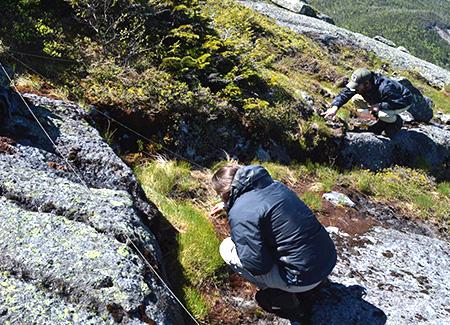Alpine Plant Populations as an Indicator of Climate Change

Alpine plant communities are considered among the most vulnerable to climate change. In the Adirondack High Peaks Region of New York, the alpine zone comprises 173 acres, home to many threatened/endangered species. The Adirondack alpine zone contains some of the state’s rarest plants and also some of its most charismatic recreational opportunities. For nearly 28 years, the Adirondack Mountain Club’s Summit Steward program has protected New York’s alpine habitat through education, trail work, and research. In 2006 and 2007, researchers collected baseline population data for rare alpine species on 376 plots on 17 Adirondack summits. In 2013, NSRC researchers re-sampled the alpine zone using 384 plots.
Populations of several rare alpine species changed significantly from 2006 to 2013. Diapensia lapponica (pincushion plant) decreased in population between the two sampling periods. Diapensia decrease may be caused by competition from other species, such as ericaceous shrubs (blueberry, azalea, etc.). These competitors may be more successful as a result of educational efforts by the Summit Steward Program to protect plants from trampling. Diapensia decrease may also be attributed to climate change. Ericaceous shrubs and other competitors may see increased success as a result of more favorable conditions created by climate change.
Climate change may cause shifts in alpine plant community composition and densities, and repeated quantitative monitoring will make it possible to detect such shifts caused by climate change.
This project resulted from a successful collaboration of the New York Natural Heritage Program and the Adirondack High Peaks Summit Steward Program, demonstrating the potential for similar future partnerships throughout the Northern Forest region.
